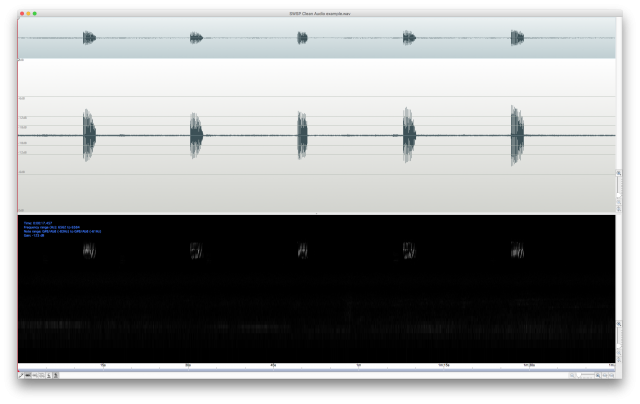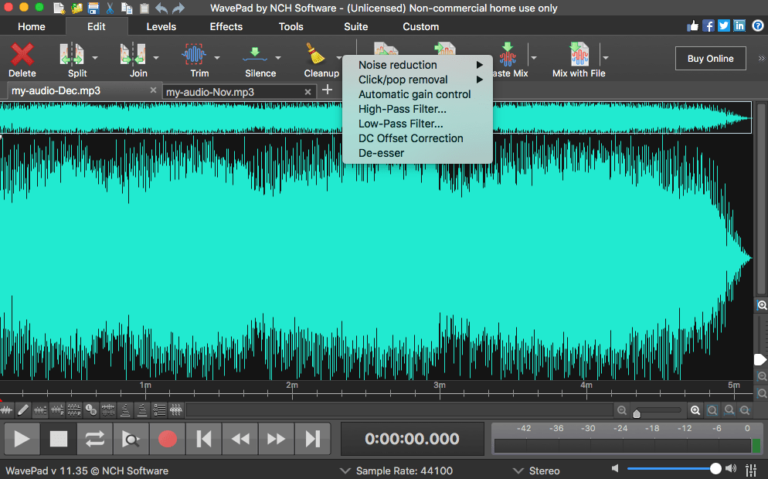

- #Wavepad tutorials how to#
- #Wavepad tutorials install#
- #Wavepad tutorials skin#
- #Wavepad tutorials pro#
If you’ve recorded a hard popping sound, the waveform will display a significant peak in the audio track. By angling your mouth away from the microphone, your exhalations will not hit the microphone’s sensors. When recording voiceovers, hard pops and wind sounds come from - you guessed it - your mouth. You lift the front of your shirt so that it covers your mouth and acts as a barrier between you and your microphone.
#Wavepad tutorials skin#
This is a dynamite hack that has saved my skin multiple times. If times are tough and you can’t access a professional diffuser, then I recommend using your shirt. When recording voiceovers, I recommend situating a pop filter in front of your microphone, and when recording on set with a boom or shotgun mic, I suggest picking up a dead cat or a windsock. These will save your audio and (most likely) your film! Placing screens in front of or on your mic will diffuse any strong winds or hard pops. In this tutorial, I’ve divided my solutions into two sections: on set and post-production.įor those of you recording audio on set without a wind diffuser, like a dead cat or a pop filter, stop what you’re doing and go pick one up.
#Wavepad tutorials how to#
These pops are an editor’s nightmare, so we’re going to show you how to get rid of (and avoid) them.

If you know what I’m talking about, then you’ve heard it before. a loud popping sound from the voiceover interrupts everything. The scene plays out like an Oscar-winning masterpiece until. You’re editing a life-changing documentary narrated by an incredible voice actor the poetic dialogue flows effortlessly over cinematic B-roll, stimulating every one of your film editing senses. Click OK.īut if you just want someone to do it for you, I’m your woman! Sign up here and I’ll get in touch.Ĭoming up in the next few posts, I’ll show you how to normalize the volume, record interviews on Skype, edit your sound files – and even add music.Need to eliminate (and prevent) popping sounds in your audio track? We’ll show you how in this video tutorial.


This is what it will look like (sort of – I have the Advanced version):
#Wavepad tutorials install#
#Wavepad tutorials pro#
You can choose from one of the pro versions that cost upwards of fifty bucks, but you don’t need all those bells and whistles to record your podcasts and interviews. There’s no special file to install – MP3 conversion is built-in. That’s why I rave about WavePad, and urge you to try it instead. After that, learning how to use Audacity is daunting for beginners. For a non-techie, that’s a barrier right there. WAV recording to MP3, the format most used for listening to online audio. For one thing, you have to download and install a special file that allows you to convert your original. Most people who create audio online use it and recommend it, but I’ve found it to be less than user-friendly. You may have heard of Audacity, the well-known, open-source sound editor. I’ve written a simple tutorial showing how to record audio using my favorite free audio editor, WavePad (no affiliate links here, btw).


 0 kommentar(er)
0 kommentar(er)
